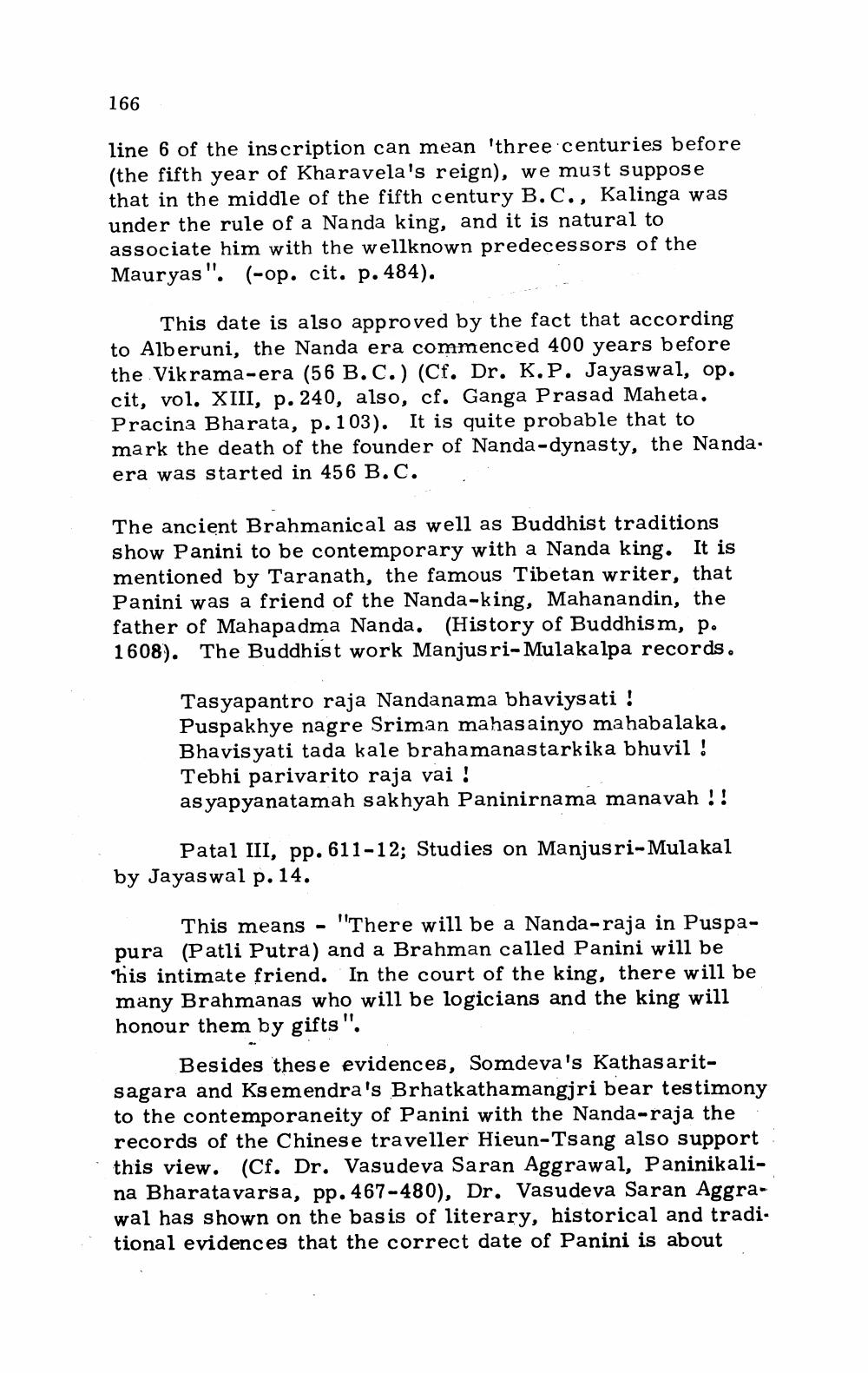________________
166
line 6 of the inscription can mean 'three centuries before (the fifth year of Kharayela's reign), we must suppose that in the middle of the fifth century B.C., Kalinga was under the rule of a Nanda king, and it is natural to associate him with the wellknown predecessors of the Mauryas". (-op. cit. p. 484).
This date is also approved by the fact that according to Alberuni, the Nanda era commenced 400 years before the Vikrama-era (56 B.C.) (Cf. Dr. K.P. Jayaswal, op. cit, vol. XIII, p. 240, also, cf. Ganga Prasad Maheta. Pracina Bharata, p. 103). It is quite probable that to mark the death of the founder of Nanda-dynasty, the Nanda. era was started in 456 B.C.
The ancient Brahmanical as well as Buddhist traditions show Panini to be contemporary with a Nanda king. It is mentioned by Taranath, the famous Tibetan writer, that Panini was a friend of the Nanda-king, Mahanandin, the father of Mahapadma Nanda. (History of Buddhism, p. 1608). The Buddhist work Manjusri- Mulakalpa records.
Tasyapantro raja Nandanama bhaviys ati ! Puspakhye nagre Sriman mahasainyo mahabalaka. Bhavisyati tada kale brahamanastarkika bhuvil ! Tebhi parivarito raja vai ! as yapyanatamah sakhyah Paninirnama manavah !!
Patal III, pp. 611-12; Studies on Manjusri-Mulakal by Jayaswal p. 14.
This means - "There will be a Nanda-raja in Puspapura (Patli Putra) and a Brahman called Panini will be his intimate friend. In the court of the king, there will be many Brahmanas who will be logicians and the king will honour them by gifts".
Besides these evidences, Somdeva's Kathasaritsagara and Ksemendra's Brhatkathamangiri bear testimony to the contemporaneity of Panini with the Nanda-raja the records of the Chinese traveller Hieun-Tsang also support this view. (Cf. Dr. Vasudeva Saran Aggrawal, Paninikalina Bharata varsa, pp. 467-480), Dr. Vasudeva Saran Aggra. wal has shown on the basis of literary, historical and traditional evidences that the correct date of Panini is about




